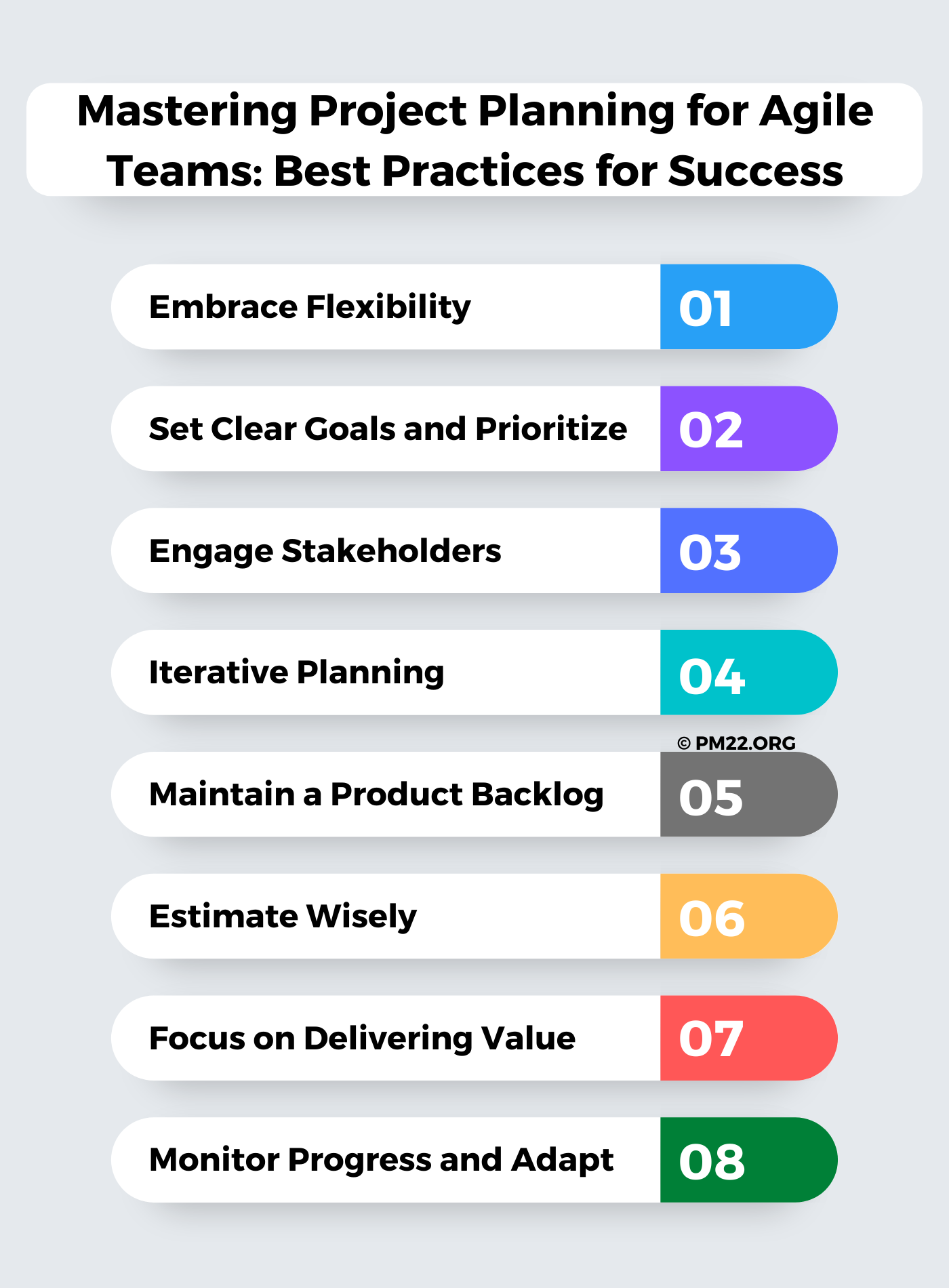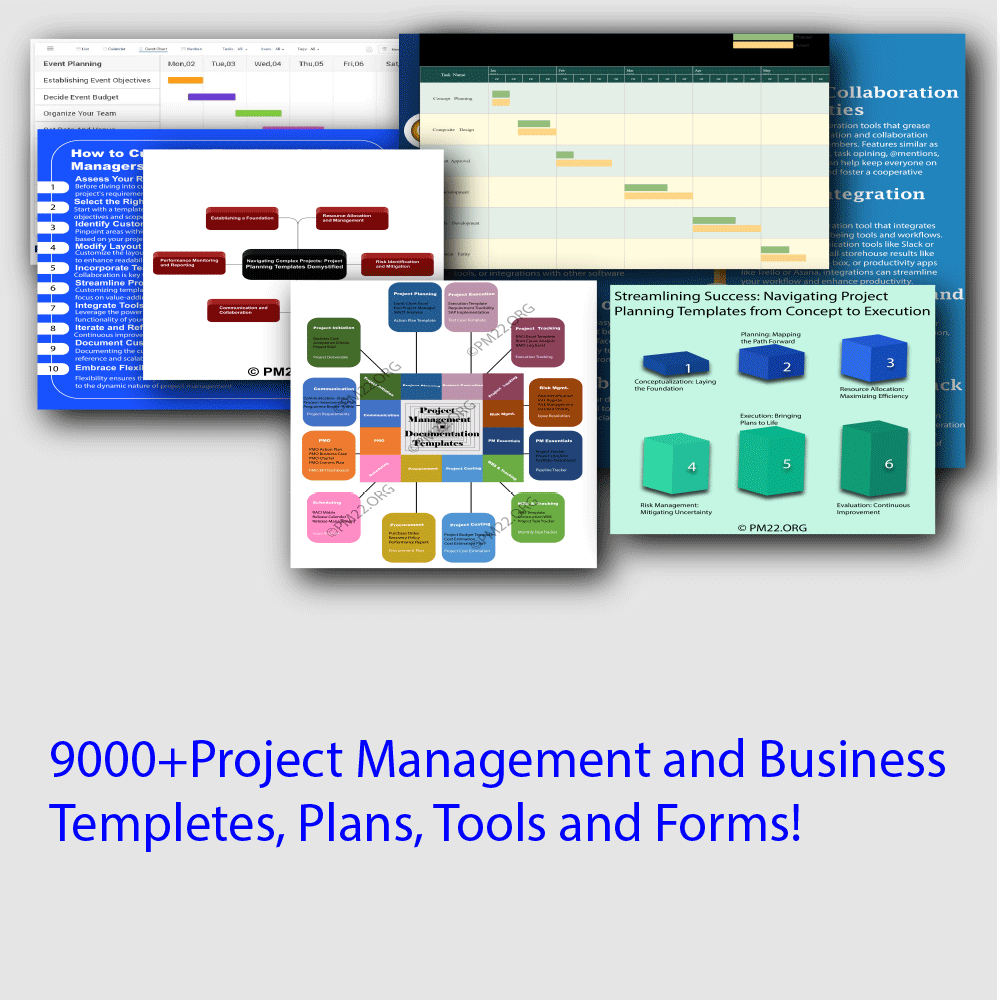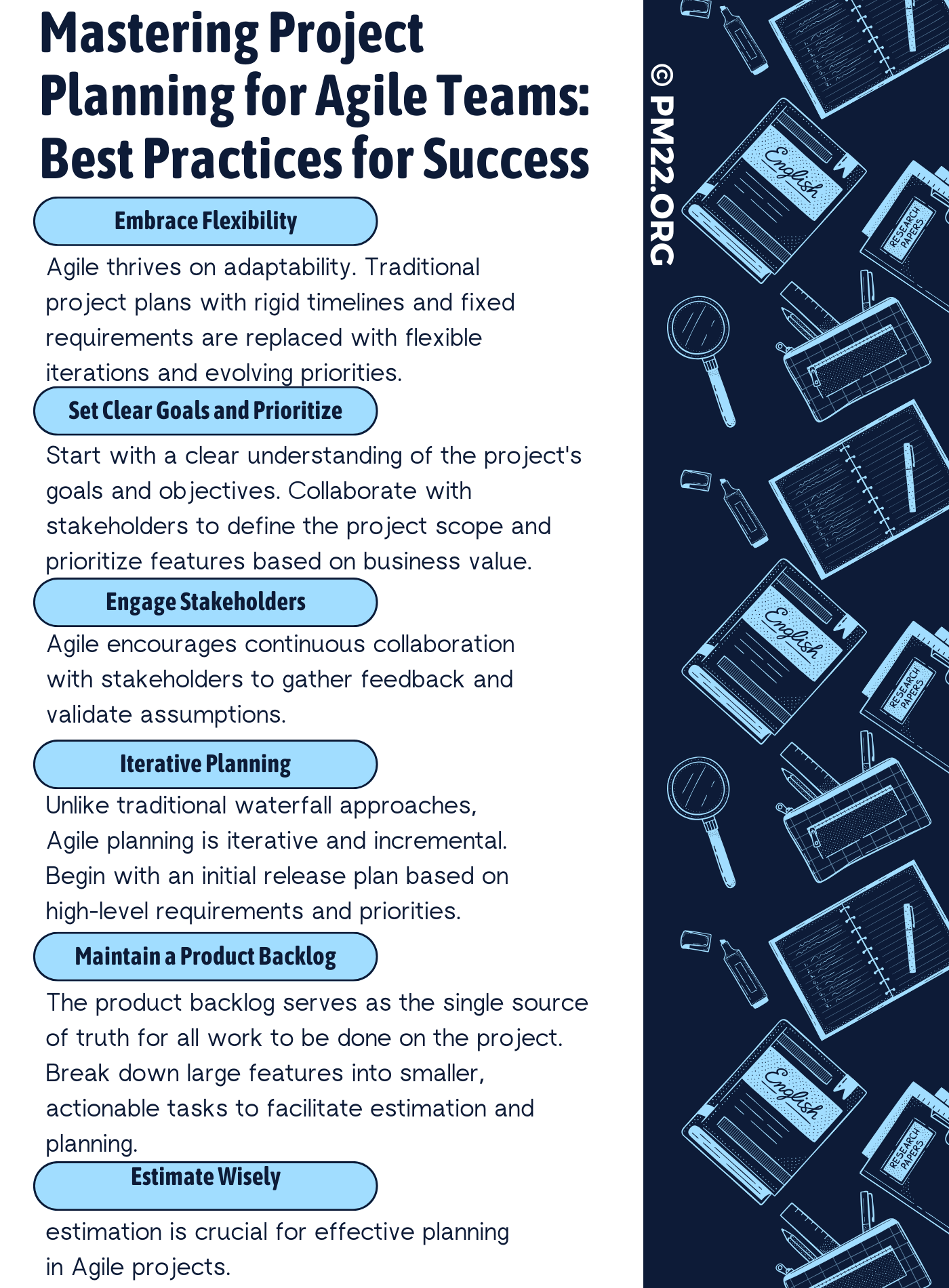 In the fast-paced world of software development and beyond, Agile methodology has become the cornerstone of project management. Agile empowers teams to respond swiftly to change, iterate quickly, and deliver value to customers efficiently. However, the key to unlocking the full potential of Agile lies in effective project planning. Here, we delve into the best practices for project planning for Agile teams, paving the way for success in today’s dynamic environments.
In the fast-paced world of software development and beyond, Agile methodology has become the cornerstone of project management. Agile empowers teams to respond swiftly to change, iterate quickly, and deliver value to customers efficiently. However, the key to unlocking the full potential of Agile lies in effective project planning. Here, we delve into the best practices for project planning for Agile teams, paving the way for success in today’s dynamic environments.
- Embrace Flexibility: Agile thrives on adaptability. Traditional project plans with rigid timelines and fixed requirements are replaced with flexible iterations and evolving priorities. Embrace this flexibility by breaking down the project into manageable chunks, known as user stories or tasks. These bite-sized pieces allow teams to adjust course easily based on feedback and changing priorities.
CLICK HERE TO DOWNLOAD 300+ PROJECT MANAGEMENT TEMPLATES & DOCUMENTS IN EXCEL
- Set Clear Goals and Prioritize: Start with a clear understanding of the project’s goals and objectives. Collaborate with stakeholders to define the project scope and prioritize features based on business value. Establishing a shared vision ensures alignment across the team and provides a roadmap for decision-making throughout the project lifecycle.

- Engage Stakeholders: Agile encourages continuous collaboration with stakeholders to gather feedback and validate assumptions. Involve stakeholders early and often to ensure their needs are understood and incorporated into the project plan. Regular communication fosters transparency and builds trust, essential elements for successful Agile projects.
- Iterative Planning: Unlike traditional waterfall approaches, Agile planning is iterative and incremental. Begin with an initial release plan based on high-level requirements and priorities. As the project progresses, conduct regular planning sessions, such as sprint planning meetings in Scrum, to refine the plan and adjust priorities based on emerging insights and changing market conditions.

- Maintain a Product Backlog: The product backlog serves as the single source of truth for all work to be done on the project. Continuously groom the backlog by adding, removing, or reprioritizing items based on evolving needs. Break down large features into smaller, actionable tasks to facilitate estimation and planning.
- Estimate Wisely: Accurate estimation is crucial for effective planning in Agile projects. Leverage techniques such as story points or ideal time to estimate the effort required for each task. Involve the entire team in estimation to leverage collective knowledge and increase accuracy. Review and refine estimates regularly to improve forecasting and planning accuracy over time.
CLICK HERE TO DOWNLOAD 300+ PROJECT MANAGEMENT TEMPLATES & DOCUMENTS IN EXCEL
- Focus on Delivering Value: In Agile, the emphasis is on delivering working software that provides tangible value to the customer. Prioritize features that offer the highest business value and can be delivered quickly. Strive for incremental delivery of functionality, allowing stakeholders to realize benefits early and provide feedback for further refinement.
- Monitor Progress and Adapt: Agile planning is not a one-time activity but a continuous process. Monitor progress against the plan regularly and adapt as necessary to stay on track. Utilize burn-down charts, velocity metrics, and regular retrospectives to identify areas for improvement and make course corrections proactively.

- Foster a Culture of Continuous Improvement: Agile is as much about mindset as it is about methodology. Encourage a culture of continuous improvement within the team, where feedback is valued, and lessons learned are incorporated into future planning efforts. Celebrate successes and learn from setbacks to drive ongoing growth and innovation.
In conclusion, mastering project planning for agile teams requires a combination of flexibility, collaboration, and a relentless focus on delivering value. By embracing Agile principles and best practices, teams can navigate complexity with confidence, adapt to change with ease, and deliver exceptional results in today’s dynamic business landscape.
